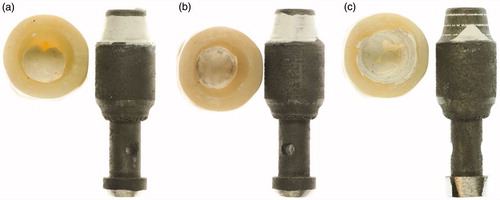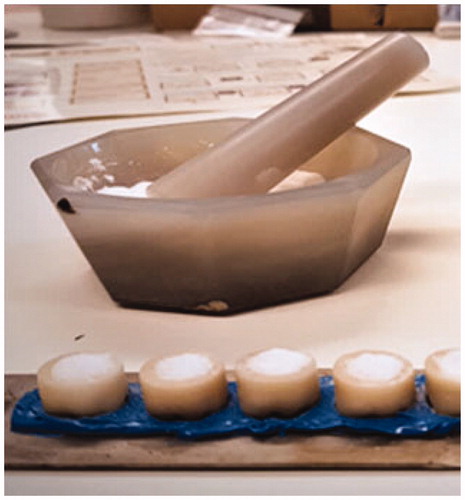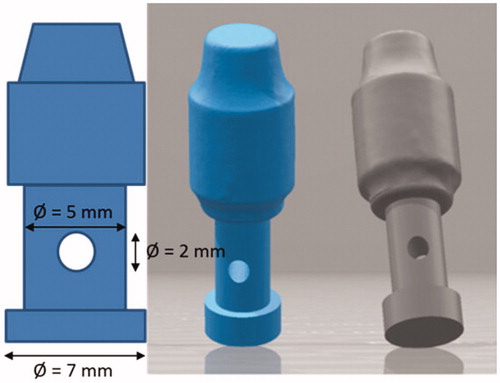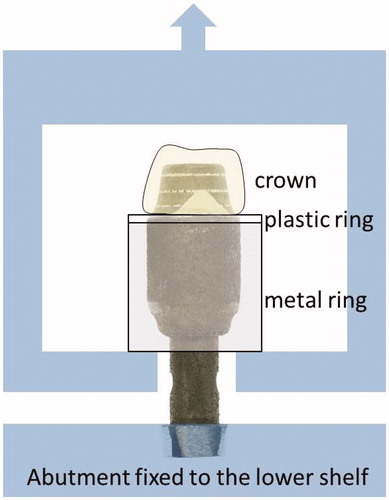Figures & data
Table 1. Materials used in the experiments.
Figure 2. Crowns de-bonded from implant substitutes when the insides of the crowns are (a) sandblasted, (b) ground and (c) melt-etched with potassium hydrogen difluoride.

Figure 3. Potassium hydrogen difluoride crushed in a mortar and filled in crowns before melt-etching.

Figure 4. Inner surfaces of crowns, visualized in stereo microscope after (a) sandblasting, (b) grinding and (c) melt etching.

Table 2. Results of tensile testing at rupture, mean values and standard deviations.


